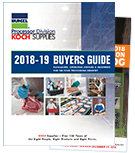
What Is Calibration and Why Is It Important?
Calibration involves creating a constant temperature in which to test your thermometer to ensure that it is producing accurate readings. It’s a very important procedure for food thermometers especially, as the readings on these devices help to determine whether a food product is safe for consumption. An un-calibrated thermometer that is off by even a few degrees could lead to undercooking and food contamination from harmful or even deadly foodborne illnesses. Learn when and how to calibrate your food thermometer to make sure you’re serving your family, friends and customers only safe and delicious food!
When should I calibrate my thermometer?
- Most manufactures recommend an annual calibration of the thermometer to ensure accuracy over time. If you can’t remember the last time your thermometer was calibrated, it’s never a bad idea to take the extra five minutes to do so.
- Calibrate a new thermometer before its first use. Through shipping and handling, the thermometer may have been tossed around, causing the gauge or other mechanisms to shift. This could result in inaccurate readings right out of the box. To be safe, do so before the thermometer’s first use.
- Calibrate the thermometer when switching back and forth from extreme temperatures, such as freezing cold to boiling hot. This helps to check that the thermometer isn’t shocked by the sharp temperature chances, and that it’s performing seamlessly on the extreme temperature ends.
- Calibrate the thermometer if it is dropped. Just as with the new thermometer, this could cause the gauge or mechanisms to shift, resulting in inaccurate output. Better to be safe than to be sorry!
How do I calibrate my thermometer?
Here’s a quick and easy method to calibrate your thermometer to test its accuracy for food prep safety:
- Add cold water and ice to a glass. Stir and allow to sit for 3 mins to allow water to reach the correct temperature.
- Stir again, then insert the thermometer into the glass; enough to submerge the tip, about 2 inches. Be sure that the thermometer does not touch the bottom or sides of the glass.
- The thermometer should read 32ºF (0ºC) If not, note the temperature discrepancy and offset using your thermometer’s calibration features.
- That’s it! As long as you’re receiving the correct 32ºF reading from this test, you’re sent to use the thermometer in other applications and trust that you’re receiving the correct temperature readouts!
In need of a new thermometer?
Big Red Thermometers are perfect for food applications! Shop our variety of digital and water-resistant options here: https://www.bunzlpd.com/big-red-thermometers.





